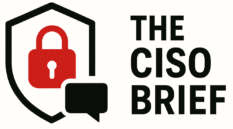Fast Facts
-
Targeted Vulnerabilities: The U.S. CISA warns that ransomware actors are exploiting unpatched SimpleHelp RMM instances, particularly affecting customers of a utility billing software provider, highlighting ongoing exploitation since January 2025.
-
Mitigation Recommendations: CISA recommends organizations update SimpleHelp, isolate servers from the internet, and notify customers, emphasizing proactive measures to prevent double extortion attacks.
-
Fog Ransomware Characteristics: Fog ransomware, first detected in May 2024, uses unique tactics like deploying legitimate employee monitoring software and open-source tools for data exfiltration and maintains access for potential espionage motives.
- LockBit Ransomware Insights: Despite setbacks, LockBit ransomware continues to thrive with a focus on China, raising concerns about its willingness to operate amid political risks, as revealed by a recent affiliate panel leak.
Problem Explained
On Thursday, the U.S. Cybersecurity and Infrastructure Security Agency (CISA) issued a warning regarding a significant ransomware threat targeting customers of an unnamed utility billing software provider. This cyber assault exploits unpatched instances of SimpleHelp Remote Monitoring and Management (RMM) software, which has been under scrutiny since vulnerabilities (CVE-2024-57727, CVE-2024-57728, and CVE-2024-57726) were disclosed earlier this year. CISA noted a disturbing trend where ransomware groups, notably DragonForce, have been leveraging these flaws to conduct double extortion attacks, which involve breaching unprotected SimpleHelp instances to exfiltrate sensitive data.
In a parallel incident, Symantec reported on the Fog ransomware, which has targeted a financial institution in Asia through sophisticated means, including the use of legitimate employee monitoring software to gain network access. With the threat actors utilizing a combination of open-source pentesting tools and advanced techniques for privilege escalation, Fog has inflicted damage on a variety of sectors. Unveiling an uncommon approach, the attackers maintained post-exploitation access to the network, suggesting the potential for espionage motives alongside their financial objectives. These incidents, reported by CISA and Symantec, underline the evolving landscape of cyber threats and the necessity for vigilance in cybersecurity practices.
Potential Risks
The recent escalation of ransomware attacks targeting unpatched SimpleHelp Remote Monitoring and Management (RMM) instances poses significant risks not only to affected businesses but also to their interconnected partners and customer bases. As ransomware groups exploit vulnerabilities in outdated software, they can infiltrate and compromise utility software providers, subsequently impacting downstream clients who rely on these interconnected services for operational continuity. This creates a ripple effect: the potential for extensive data breaches and service interruptions threatens not only the immediate organizations involved but also undermines customer trust and could engender substantial financial losses across entire industry sectors. Moreover, if organizations succumb to ransom payments, they inadvertently perpetuate a cycle of cybercrime, emboldening actors to target additional entities and cultivate further disruptions in an increasingly interdependent digital landscape. Consequently, the ramifications of these attacks extend well beyond individual companies, jeopardizing the integrity and security of broader operational networks while demanding a cohesive response to bolster defenses against emerging threats.
Fix & Mitigation
In the realm of cybersecurity, timely remediation is paramount; ransomware gangs ruthlessly exploit unpatched vulnerabilities like those found in SimpleHelp, amplifying risks through double extortion tactics.
Mitigation Steps
- Immediate Patching: Regularly update and apply security patches to affected software.
- Incident Response Plan: Develop and rehearse a structured response strategy to contain breaches swiftly.
- Network Segmentation: Implement segmentation to limit lateral movement in case of infiltration.
- Employee Training: Educate staff on recognizing phishing attempts and social engineering tactics.
- Data Backups: Conduct frequent and secure backups to mitigate data loss and streamline recovery.
- Threat Intelligence: Leverage updated threat intelligence to anticipate and counteract emerging threats.
NIST CSF Guidance
The NIST Cybersecurity Framework emphasizes the necessity for proactive identification and protection mechanisms against potential threats. For in-depth strategies, refer to NIST SP 800-53 for controls related to safeguarding systems and data against exploitation.
Explore More Security Insights
Explore career growth and education via Careers & Learning, or dive into Compliance essentials.
Understand foundational security frameworks via NIST CSF on Wikipedia.
Disclaimer: The information provided may not always be accurate or up to date. Please do your own research, as the cybersecurity landscape evolves rapidly. Intended for secondary references purposes only.
Cyberattacks-V1

